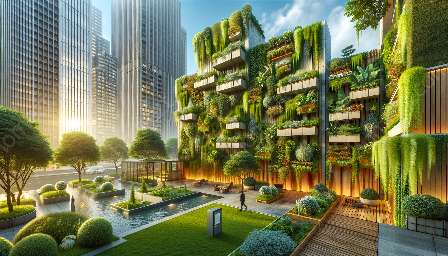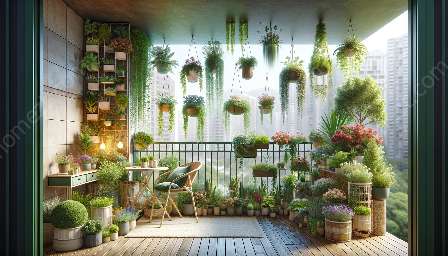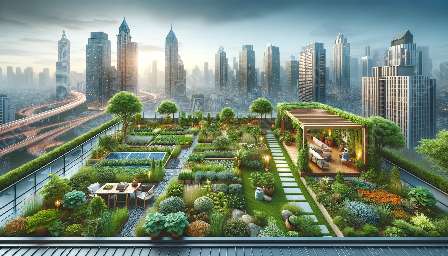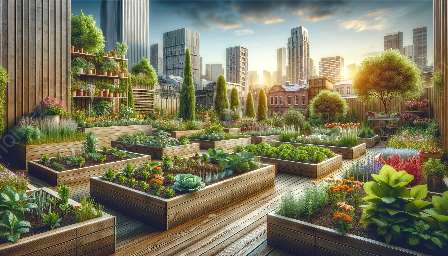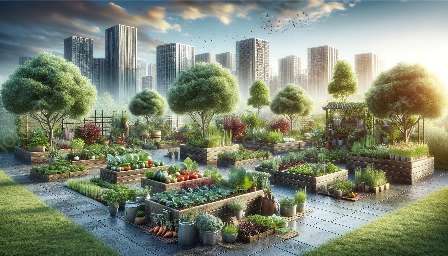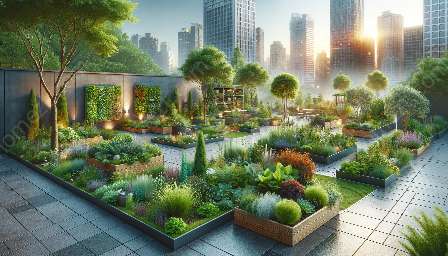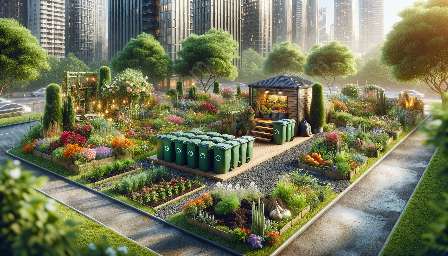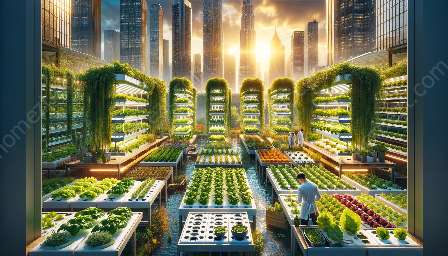Rooftop gardening is an innovative and sustainable approach to urban landscaping, offering a host of benefits, from environmental to aesthetic. In this comprehensive guide, we delve into the intricacies of rooftop gardening, exploring its compatibility with urban gardening and landscaping, as well as providing practical advice on how to start your own rooftop garden.
Understanding Rooftop Gardening
Rooftop gardening, a form of urban gardening, involves cultivating plants, flowers, herbs, and even vegetables on rooftops, balconies, and terraces of buildings. It is a practice that capitalizes on underutilized space, bringing greenery to densely populated urban areas.
Rooftop gardens can vary in size and complexity, ranging from simple container gardens to fully-fledged green roofs with integrated irrigation systems and specialized plantings. Such gardens contribute to the reduction of urban heat island effect, improve air quality, and provide insulation to buildings, thereby promoting environmental sustainability.
Benefits of Rooftop Gardening
Rooftop gardening offers a multitude of advantages, making it an appealing option for urban dwellers and landscaping enthusiasts:
- Environmental Benefits: Rooftop gardens contribute to biodiversity preservation, carbon sequestration, and stormwater management, playing a key role in urban ecological balance.
- Thermal Insulation: The presence of plants on rooftops helps reduce indoor temperature fluctuations, resulting in energy savings and increased comfort.
- Aesthetic Appeal: Rooftop gardens can transform mundane rooftops into lush, inviting spaces, enhancing the visual appeal of urban landscapes.
- Food Production: With proper planning, rooftop gardens can yield fresh produce, promoting local food sustainability and reducing food miles.
Compatibility with Urban Gardening
Rooftop gardening shares commonalities with urban gardening, as both revolve around optimizing limited space in urban environments to grow plants. Urban gardening encompasses various practices, including rooftop gardening, community gardens, vertical gardening, and balcony gardening, reflecting the diversity and adaptability of urban agricultural practices.
Furthermore, rooftop gardening contributes to urban greening efforts, aligning with the broader objectives of urban gardening to create green spaces in the midst of urban sprawl.
Gardening & Landscaping Considerations
Rooftop gardening presents unique challenges and opportunities in the realm of gardening and landscaping:
- Structural Integrity: Before embarking on rooftop gardening, it is essential to assess the structural capacity of the building to support the additional weight of the garden, soil, and water.
- Drainage Systems: Proper drainage is crucial to avoid water accumulation and damage to the building structure. Implementing efficient drainage systems is vital to the success of rooftop gardens.
- Plant Selection: Choosing the right plants is critical in rooftop gardening, considering factors such as wind exposure, sunlight availability, and soil depth limitations.
- Maintenance: Regular maintenance and upkeep are fundamental to ensure the longevity and vitality of rooftop gardens, ranging from irrigation to pest control, and seasonal planting.
Conclusion
Rooftop gardening epitomizes the harmonious integration of nature into the urban landscape, offering an array of benefits while presenting unique challenges. By embracing rooftop gardening and its compatibility with urban gardening and landscaping, individuals and communities can contribute to the sustainability and livability of urban environments, fostering a connection to nature amidst concrete and steel.


